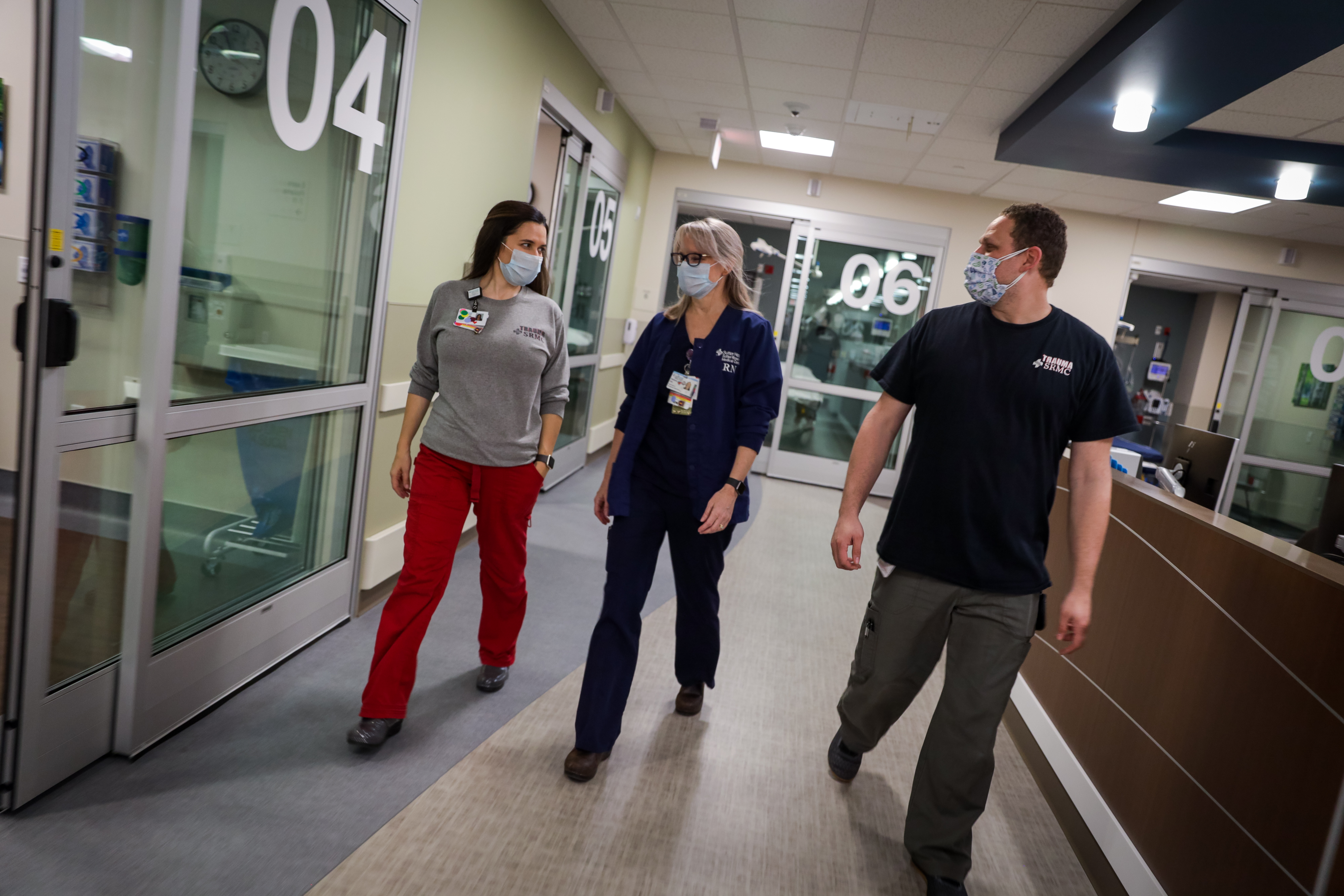The Hippocratic Oath has a special significance in the field of medicine. While its meaning has evolved over centuries with modernized text, its core truth remains: safety.
Hospitals across Sutter Health’s integrated network recognize safer care is fundamental to high-quality care. This approach has helped Sutter’s performance exceed state and national averages in the six main quality measures.
- Key Quality Measures
• Sepsis
• Central line-associated blood stream infections (CLABSI)
• Catheter-associated urinary tract infections (CAUTI)
• Surgical site infections from colon surgery (SSI)
• C-section rates for first-time mothers with uncomplicated deliveries (NTSV)
• Clostridium difficile intestinal infections (C-Diff)
Why do these measures matter? They are the most common to prolonging hospital stays, complicating care patient care plans and most importantly, influencing patients’ experiences. They also increase costs that can impact overall affordability in healthcare.
The Information Exchange

“Teams across our organization share a common goal of high quality care, so it becomes a question of, ‘How do we partner to meet that goal?’” said William Isenberg, M.D., chief quality and safety officer for Sutter Health.
The collective sharing of best practices—in support of high-quality, safer care—is made easier through integrated networks like Sutter Health. Standard approaches and protocols can spread across integrated systems through numerous channels.
And that collaboration goes both ways. Sutter has hospital-based committees and subcommittees working on lowering rates all the time. These groups then team up with other hospital departments as “communities of interest” to tackle quality measures that may be more prevalent in their respective areas. These intersections of information amplify quality efforts, which are bolstered too, through Sutter’s single electronic health record platform.
Communication is Key
Dr. Isenberg reminds us there is one major element to quality improvement that can’t be overlooked. Beyond understanding metric baselines and best practices, healthcare teams must clearly communicate with each other.

This can make a considerable difference when clinicians understand the implications their decisions have for patients, as well as other clinicians caring for them. Dr. Isenberg gives the hypothetical example of catheter use and keeping care teams accountable throughout the process.
“For me to be reminded by others on the care team to be sure to place an order for prompt catheter removal to prevent post-operative bladder infections, not only reminds me, but also demonstrates that all of us on the team have shared goals for our patient,” he said. “And those cues and conversations continue along the way.
“Our Informatics team created a reminder for doctors in our electronic health record. Once doctors place the order to have a catheter removed, our nursing teams will need to step in to remove it in a timely fashion. Our nursing leaders then monitor the time interval to make sure it’s completed within that appropriate window.”
That continuous real-time communication and collaboration among care teams minimizes waste, decreases errors, increases efficiency and ultimately improves quality of care.
Patients as Partners

Patient participation plays an important role in quality improvement, too. Dr. Isenberg says having conversations early and often with patients about care goals and expectations establishes a place of understanding and sets the stage for ongoing dialogue. For example, doctors can emphasize that vaginal deliveries are normal and most often the safest option for babies and moms. Clinicians can educate patients they may have catheters during their surgeries and the goal is to remove them as soon as possible post-operation to help avoid infection.
Dr. Isenberg acknowledged sometimes circumstances will lead to changes in care—but the communication clinicians had all along will help patients know their safety always comes first.
Continuous Improvement
Dr. Isenberg recognizes while Sutter appreciates the progress that has been made in key quality areas, the organization continuously strives to do better.

He points out the network is expanding beyond to look into social determinants of health and health equity. Teams are examining what other impacts are hitting different racial and ethnic groups, those who are uninsured or underinsured, or who have chronic health conditions like obesity, high blood pressure or diabetes. Sutter is also looking into how COVID-19 has further exacerbated those issues.
“We need to constantly look at these issues through different lenses,” Dr. Isenberg said. “What other creative ways can we do our work? How can we expand upon our learnings? This is how we will continue to serve the diverse needs of our communities and improve overall health.”





